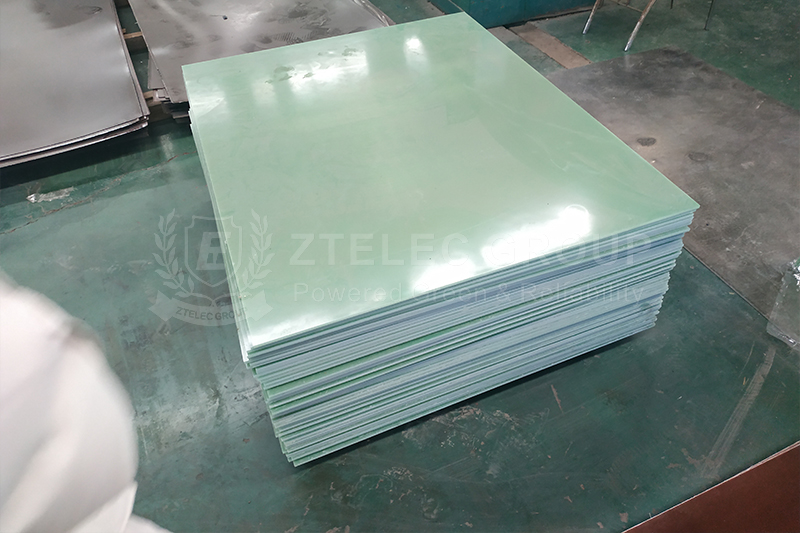In the field of industrial manufacturing and hand-made, G10 material is highly favored because of its excellent mechanical properties and durability. However, if you want to give full play to the advantages of G10 material, it is crucial to master the correct processing method. This article will introduce the cutting and polishing techniques of G10 material in detail, as well as key precautions and defect remedies to help you easily master the G10 material processing technology.
When cutting G10 material, the choice of tools is very critical, which will directly affect the cutting quality and material integrity. We recommend using thin saw blades or diamond cutting blades, such as high-density tungsten carbide saw blades, diamond-coated rotary tools or precision saws. Using these tools can effectively reduce wear and material damage during the cutting process. If conditions permit, CNC processing or laser cutting is a better choice. Because they are not only highly accurate, but also ensure that the cutting edges are flat and smooth. It should be noted that ordinary steel saw blades should be avoided because they are prone to burrs and cracks, which will affect subsequent processing and material properties.
Fix the material: We need to use a clamp to firmly fix the G10 board, which can reduce vibration during the cutting process. Stable fixation is the basis for ensuring cutting accuracy and preventing material displacement.
Slow-speed cutting: Whether using hand-held tools, table saws, or band saws for cutting, low-speed mode must be used. Because low-speed cutting can reduce cutting heat, thereby reducing the risk of material damage due to high temperature.
Cooling measures: During the cutting process, the material will generate heat due to friction. Excessive temperature may cause G10 material to delaminate. At this time, we can cool it down by spraying water or using compressed air. In addition, intermittent cutting can also be used to avoid excessive heat accumulation during continuous operation.
Cutting direction: If there is a visible texture on the surface of the G10 material, we try to cut along the fiber direction. This can effectively reduce edge cracking and improve cutting quality.

To polish G10 material, you need to prepare a set of systematic tools and materials. Sandpaper is the basic material for polishing. We recommend using it in order from low grit to high grit, such as 220 grit, 400 grit, 800 grit, 1200 grit, and finally 2000 grit, to gradually refine the surface through grinding. In addition, using a polishing wheel or felt head and polishing paste (such as diamond paste or cerium oxide) can achieve better polishing results. If you choose manual polishing, soft cloth or fiber polishing block is also a good choice.
Rough Grinding: We need to use 220-400 grit sandpaper to remove burrs caused by cutting. When grinding, do it in one direction along the edge to avoid excessive heat generated by back and forth friction, which will damage the surface of the material.
Fine Grinding: Next, gradually change to higher grit sandpaper (800-1200 grit). Every time you change the sandpaper, make sure to remove the scratches left by the previous process to make the surface smoother.
Wet grinding (optional): In the high-grit grinding stage, water-dip grinding is a good method. Wet grinding not only reduces dust, but also reduces the heat during the grinding process, which protects the surface of the material.
Final polishing: We can use a polishing wheel with polishing paste and polish at a low speed until a mirror effect is achieved. If you choose manual polishing, apply slight pressure with a soft cloth and wipe evenly to achieve the desired polishing effect.

The epoxy resin in G10 material is sensitive to temperature. Once overheated, it will soften or delaminate. Therefore, we must pay close attention to the temperature throughout the processing process to avoid irreversible damage to the material caused by high temperature. Especially when processing green G10 material, because its dye may be more sensitive to high temperature, temperature control needs to be more cautious.
When we drill holes in G10 material, in order to avoid stress concentration and cracking, we should pre-drill with a small drill bit and then gradually expand the hole diameter. In addition, chamfering the edges of the material, that is, lightly grinding the edges with sandpaper, can effectively reduce the generation of stress cracks.
During the processing of G10 material, harmful dust will be generated. To protect the health of operators, we must wear dust masks and ensure that the work area is well ventilated. At the same time, eye and hand protection should be done to avoid injury from cutting tools or splashes.
If cracking occurs during processing, don’t worry. We can take different remedial measures according to the size and depth of the crack. For small cracks, use epoxy resin glue to fill them. After the glue cures, re-grind it to make it smooth. But if it is a deep crack, you need to cut off the damaged part and then re-process it according to the cutting and polishing steps.
Mastering the cutting, polishing technology and key precautions of G10 materials can help us maintain the integrity of the material to the greatest extent during the processing process and improve the quality of the finished product. Whether it is industrial production or handmade, these practical processing skills will escort our projects.
If you need our products please write down any questions, we will reply as soon as possible.
There are three ISO certificates for quality certification. The certificates will be shown later. ISO
After receiving the advance payment, the production cycle is 15-25 days. And the transportation cycle should be calcul……
We supply with installation guide and user manual for each transformer. If you do not understand them. We will offer v……